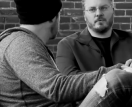 The following is a transcription excerpt from a conversation a while back on #cjLIVE between yours truly and my dear friend, Pulitzer Prize winning photographer and filmmaker Vincent Laforet where we discuss gear, professional career, creative vision and more. We’ve got it on video (link at end of this post), but I think the transcript is nice because you can skim the conversation in just a couple minutes. And there are some nuggets in there from Vince…
The following is a transcription excerpt from a conversation a while back on #cjLIVE between yours truly and my dear friend, Pulitzer Prize winning photographer and filmmaker Vincent Laforet where we discuss gear, professional career, creative vision and more. We’ve got it on video (link at end of this post), but I think the transcript is nice because you can skim the conversation in just a couple minutes. And there are some nuggets in there from Vince…
Chase Jarvis: I’m here with my very dear friend Vincent Laforet. Vincent. Pleasure to have you on board. We’re here talking about things hopefully that you want to know about. Vince, you told me a story once. It was a story that seemed like it would have a lot of impact and we talked about it both on camera in a different place and off camera and it was your father stacking at the end of every month he, if I’m not mistaken, if I’m blowing this interrupt me, but he would review the slides that you shot and he’d put the good ones in one pile and the ones that were out of focus…
Vincent Laforet: I’d get my thirty slides of the month and he’d stack ten here and then thirty here on his desk…
CJ: And he would take the scissors…
VL: Out of the drawer…
CJ: And push them through all of the slides that were out of focus and un-technical.…
VL: Yeah.
CJ: That’s got to make a mark…
VL: It made a mark in a good way and in a bad way. The good way was that I’ve always been a very technical person. So, I insist on the image being sharp and well exposed and where does that come from? Well framed and mastering the technique. Yet I recently actually just kind of delved a little more philosophically into this.
I got a note from my biological dad who said lots of compliments on your work. I’d love to see a little more craziness in your work. I was like touché because I’ve been aware of that since I was twenty. That directly comes as a result of being technical and it’s like life, you’ve got to find balance; same thing in your work.
If you’re so dead set on getting that perfect, sharp, perfectly framed image you’re not going to be as spontaneous. You’re not going to be as open to the impromptu moments. So, I guess that’s the answer to that is you’ve got to find that balance between the two.
CJ: But there are people like that in your life if I’m not mistaken, that really influenced your course.
VL: There’s one, Ken Irby is an instructor at the Poynter Institute in St. Petersburg, Florida. I went to see him when I was in my teens with my portfolio, drove out in a snow storm, and he basically sent me flying out of his office because I was not prepared. I had personal pictures. He said how’d you get in my office? And he was the assistant DP at Newsday.
How did you get in here? No, you’re not at all ready, and when you are ready send me stuff. I angrily sent him a bunch of newspaper clips three months later and he married me to my wife years later. The best gift he ever gave me was to invite me to Poynter in my early twenties to teach.
And here I was, I think twenty-seven, twenty-eight, teaching a bunch of professionals that were thirty, forty years old and I was like, oh my God, what am I doing teaching people that have double my experience? It was very humbling, but it also unlocked something in me. Teaching is like one of the best gifts that you can give back to people and it’s incredibly self-fulfilling. So, he’s always been a great influence for that reason.
And then there’s a variety of filmmakers that have been great influences and photographers. But there’s so many I think many people have that one person, but for me there’s like a dozen or two dozen people.
CJ: Let’s bounce up to technique here and technical since we’ve mentioned that word a couple times.
VL: Now see, I love technical. The important part is I was obsessed with technique. The first year and a half going into filmmaking I wanted to know about every jib, every color balance, every menu setting, every Technocrane, every helicopter mount and I was obsessed with it and I lost a year of my life as a filmmaker.
Probably not because I know what they are now, which makes me a better filmmaker, but it’s so not what photography or filmmaking are about. They are tools to help you get the desired results, but if you’re so obsessed on technique, you’re holding yourself back in my opinion.
CJ: I too went through a process that was similar and it was earlier in my photography career. I didn’t go to photography school. I was 100% self-taught and my background is in aesthetics and the philosophy of art and I was so busy studying it that I said F this; I want to go and make it. And I had some anxiety about not having been formerly trained, so…
VL: We all do.
CJ: I went down this rabbit hole where I learned everything; every rule and I got to a certain point and realized that I could now make the technical pictures that I wanted to make. I studied my body of work and was so disappointed that it lacked originality, it lacked depth, it lacked a personal story that is actually what is, I would say, the most important part about the pictures.
And like your dad with the scissors; technical aspects help because they help you make the kind of images that you want to make. Once you’re there, it’s kind of hard to get back off that horse and reinvent and I think that’s the process that you’re talking about.
VL: Yeah. I think like any musician you’ve got to learn your scales. A ballerina has to practice the different poses.
CJ: I’m still practicing.
VL: You have to learn the basics. So, you definitely can’t skirt around those, but my favorite saying is, learn all the rules and break them and that’s when you start doing some brilliant stuff.
But the one point I like to make, I’ll definitely take the answer, is make every single mistake in the book, do everything the wrong way. If what you’re shooting has heart and soul and is a good story, it’ll still rise to the top.
CJ: Quick technical question… Pam is asking, I’m trying to create slow motion video with a 5D Mark II and Twixtor for AE. Ultimately, I want to have my final product in 24p, but I’m unsure at what point to import the 24p setting; in camera or in post?
VL: There are several ways of doing it. Most people use Cinema Tools to slow stuff down. It’s kind of like just rewriting the XML or the info to do that. Twixtor’s a very powerful piece of software that you can use to slow down the really slow shutter speeds. To be honest, I have other people do that for me now. This is a good example.
This is an answer that I knew dead on because I was doing it daily two years ago. You go to this setting, this setting, this setting. I don’t really do that anymore. I have post-people who do it for me because I found that if I’m focusing on that, I’m not focusing on a larger creative.
CJ: Let’s move on. That hopefully got at your question. One of the things that, if I’m going to segue out of that it’s going to be this idea of don’t do that anymore. I get this a lot of times and being somewhat of a public person and opening myself up for questions and criticism because I’ve learned a shitload from other people in the process, ‘like what do you mean? You don’t do your own Photoshop work anymore. You’ve got a gaffer on site, you’ve got a grip.’ That’s what a set is. A set is a functioning; it’s a little community, it’s a little economy and it actually is incredibly efficient and it’s the same thing in the still world.
The fact that Scott is in the Paint on Photoshop is not indicative of me not doing my job. In fact, I still very much relish in the fact that I did do that job, can do that job, but there are people who want to do that more than they want to take pictures.
I want to take pictures, make films and the people that are really, really good at those things that’s their area of specialization and nothing, in my experience, at this level happens alone.
It’s all very collaborative. If you can rely on your team, bring in a great DP. To have Erik on a camera makes me feel good. Not like, oh, I wish I was over there carrying that thing around. No because it distracts me from the overall vision, from sitting there saying, no, we’ve got to retake that. We cut the left edge of that frame off. If I’m running the camera, who’s going to do that?
VL: I used to make fun when I was a little younger of the veteran photographers who would be asked the question what f-stop did you shoot that at? The gentleman or the woman would say, I haven’t the faintest clue. And I’d be like who is this hack who doesn’t even know what aperture he’s shooting at or she’s shooting at?
How could they call themselves a photographer? I said to myself, I will never become that person. And guess what?
CJ: You’re that person.
VL: I’ve become that person. I’m not embarrassed about it because I learned over time and one of the lessons I hope I can share with people is that you have to become that person because on my first initial film shoots, when we were very small crews, I was manning the cameras, I was prepping them, I was making sure that all the gear had arrived, that we had all of the correct accessories, etc. and guess what I wasn’t doing during all that prep time?
CJ: Thinking about what you’re shooting.
VL: Thinking about what the heck we were going to shoot. We’d get ready to shoot and he would say, hey, what do you want to roll on? I’d be like, I haven’t gotten that yet. The camera works. It looks beautiful. The aperture’s dead on. The exposure, color and temperature is fantastic. This new gizmo that doesn’t exist anywhere else, we got it and it’s functioning, it’s groundbreaking, but what in the world are we shooting?
CJ: I felt like earlier on in my career and still to this day sometimes I have like a gangster impulse to go out and make something really rough and raw and quickly, usually as a prototype or a ‘is this going to work for something larger?’
That keeps you touching the work but realizing that what you’re really doing is planning for the real show. So, I think if I’m going to try and summarize a takeaway here, we both have come up through that. Doing every job and some of them better than others, some of them actually being terrible at and bringing in somebody is a luxury that’s developed over time.
VL: We’ll always go back to it. You and I will always go back to grabbing a camera with one assistant, or colleague, or friend and going to do it. Because we have the bigger production experience we’ll do the smaller production more intelligently. We’ll say, we don’t need this whole crew at this location, it’s insane. The light’s fantastic.
CJ: I actually trim crew now and we do that a lot. We’ll be with a crew of thirty-two people and we’ll say that shot over there is just you, you, you, you, and you.
Six people will run off to make that shot because it’s light and fast and you want to do it really quickly because the light’s going down and if there’s thirty people and you’ve have to lumber over there and…
VL: Forget it. Forget it and you’ve got; especially in this new age one of the things that I talk to agencies about all the time is we’re not going to reinvent the way films are made or commercials, but we can use new technology in intelligent ways.
So setting up a 5D bare, it’s not going to attract much attention and you’re going to get 1080 video on a 85mm f1.2 that looks like a Panavision camera or close to with just one person holding it or clamping it on. You can’t do that with a motion picture camera. So take advantage of those tools.
CJ: What’s your take on 5D versus RED? I have my answer, but I’m waiting to hear yours.
VL: The same take I have with 5D versus 7D versus AF100 versus RED versus Phantom versus Alexa versus Panavision versus 16mm versus flip phone, iPhone. Every single tool has its sweet spot and you have to know them all and realize where each shines. So, the Canons tend to be pretty unparalleled in terms of low light, in terms of mixed light mostly and in terms of a cinematic look. They absolutely go on motion picture screens if you know what you’re doing.
The RED is a clunky, big system right now, the RED One, that requires a crew. I can’t put a RED with an Angenieux lens on my shoulder for more than five minutes. It’s very heavy. You can’t jump out of a car with it and start rolling. The Epic is really interesting. Every tool has its place.
CJ: Yeah. I’m glad you said that because for me cameras; and let me put an asterisk by this, cameras are like hammers for a carpenter. I don’t intend to say that they’re a dumb piece of technology because that’s not true. They’re very, very important. Try and build a house without a hammer. It’s really hard. But they are tools and they’re different tools.
You have a different framing hammer than a roofing hammer than a finish work hammer and the same exact thing is true for cameras. I would say this in many ways goes for stills as well. More so than video because you’ve got the frame rate capabilities and different glass attached to the front or not.
But they’re tools and think of them in such and sometimes we’re actually a little rough with them because we burn through them and we think of them as a means to an end not the thing in and of itself, which is one of the reasons I tend to freak out about gear-only conversations, but we will not go there for now. What don’t you get asked?
VL: One of the things people don’t really ask me about is how afraid I was making the transition into video. People always seem to assume it was like, oh yeah, no problem, you did it. These past two-and-a-half years have been some of the scariest two-and-a-half years of my career. But it’s also the most alive I’ve ever felt. Just like any of you, I freaked out when I decided to make this career evolution. It’s not a change, it’s an evolution because I still want to do stills plus web plus films all together as one packet I think for most ad agencies. I don’t have that degree from NYU.
I could have gotten it. Or USC. I’m not exactly sure initially what exactly is the protocol on set? Can I yell cut or is it the first AD? Like little stupid stuff. I realized it’s not that important. People will tell you when you screw up. People will tell you when you make a mistake. The cool thing about being a director is people are nice about it.
When you’re anyone else, you can get really nailed. Some of my favorite quotes from other artists, and I think you’ve quoted some, I remember reading on your blog at some point is if you’re not afraid, you’re not doing anything worthwhile.
CJ: Yeah. That’s a very western mindset and I get called out on that all the time, but sorry, I’m western and fear is a hell of a motivator. I don’t like to cultivate an environment of fear by any means. I want to cultivate an environment of safety and comfort. But when I’ve stepped out of those things, I have felt more alive. Even if I haven’t done the best work, I have learned and the next time that fear-based experience made me make better work.
VL: Yeah. When I left the New York Times five years ago I think it was, I had a staff job. I had the most coveted, they call it one of the most coveted, if not the most coveted, newspaper job in the world.
CJ: The golden handcuffs.
VL: It’s the golden handcuffs because you never take them off or the velvet coffin; it’s so comfortable you never leave. I had a company car, company gear, benefits, New York press plates…
CJ: Parking pass.
VL: Parking pass. Park in front of Macy’s on Christmas Day and I wouldn’t get a ticket. It was so comfortable and I said to myself, and I went to my bosses and I said this is one of the best jobs in the world; I just don’t want to be here when I’m sixty-five. I want to experience life. I want to take chances.
CJ: Anything you want to say for the world out there or shall we just shake hands and call it?
VL: I would say that everything we’ve told you this whole ninety or eighty-five minutes do the opposite and you will achieve fantastic results because that’s the idea.
CJ: It’s what it takes.
——–
To watch this conversation in video from a recent chasejarvis LIVE go here.
Also check out Vincent’s fresh-ass online workshops from creativeLIVE.com on Intro to dSLR Filmmaking 101 or Moving from Still Photography to Video.








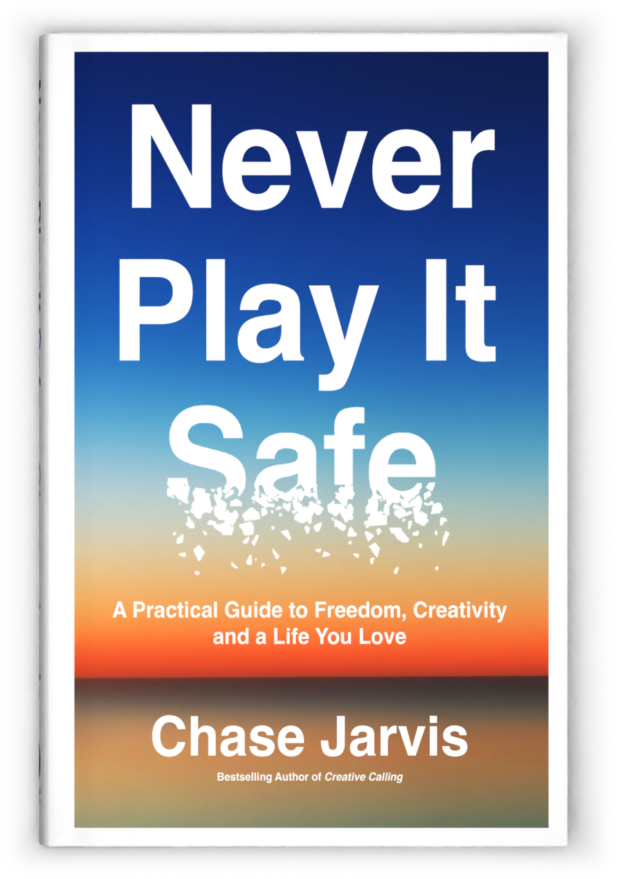










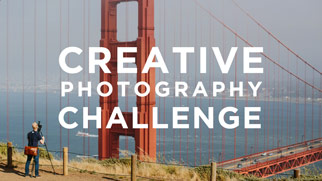
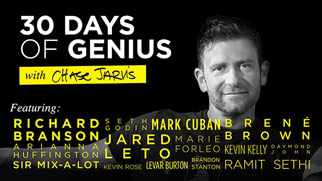
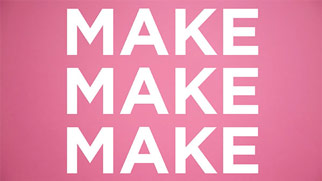
“I want to experience life. I want to take chances”
This should be the photography creed. Great interview.
Cool interview, thanks for posting.
Where is the Video, the interview video.
I think you got us lazy on reading 🙂
Wooow what a conversation, awesome stuff guys, keep it up.
Great interview sonny-j.
I feel privileged to be able to post the first comment on one of your posts..